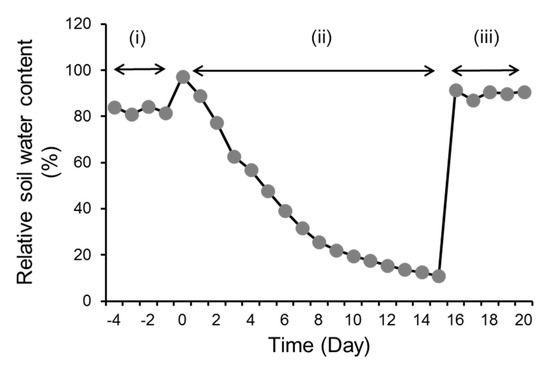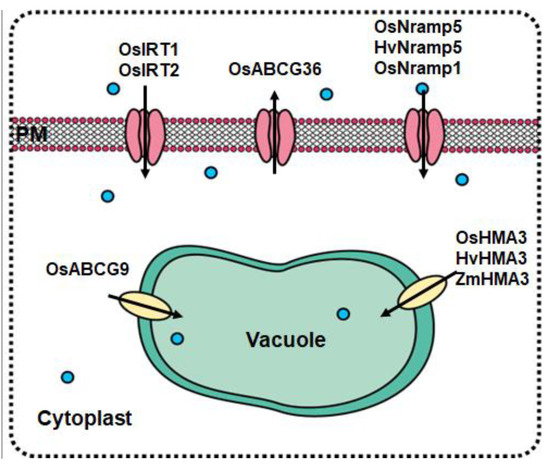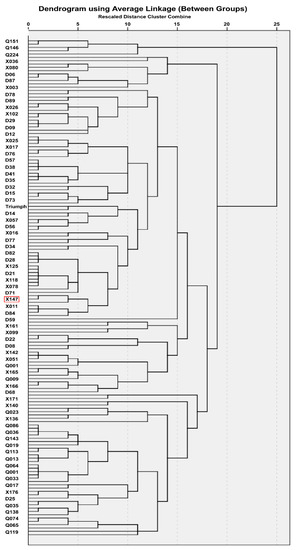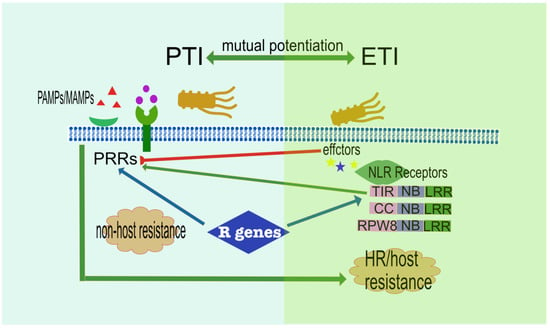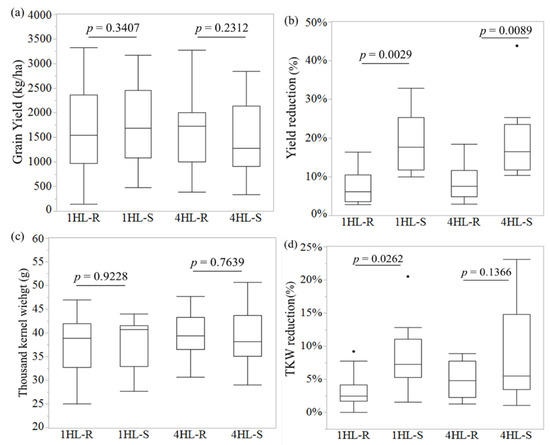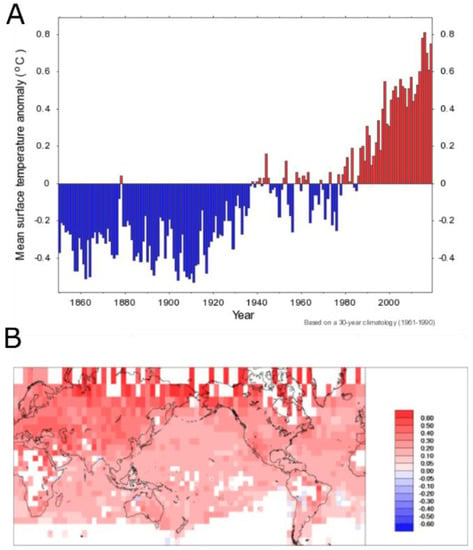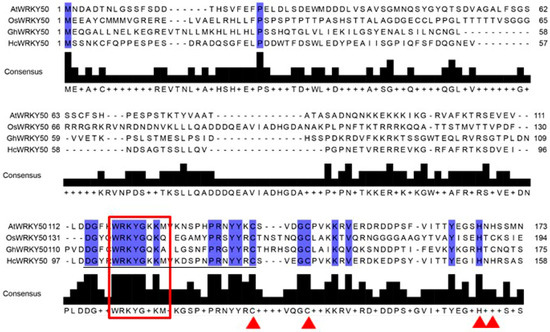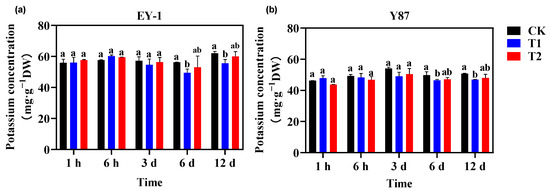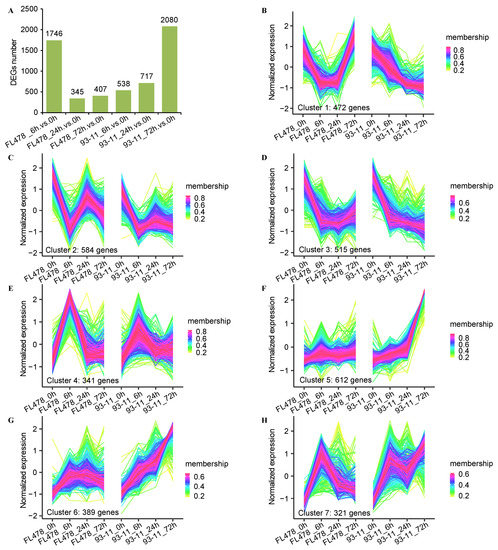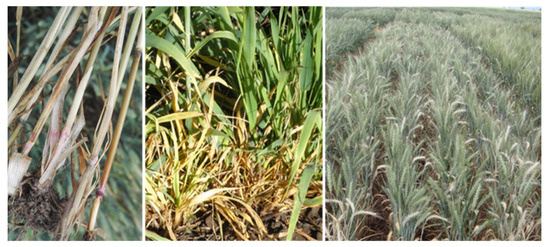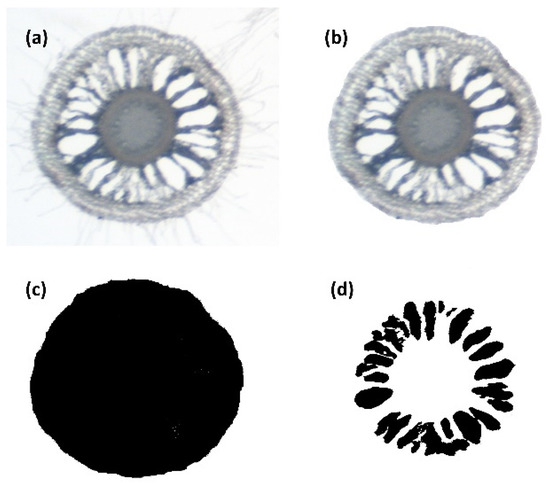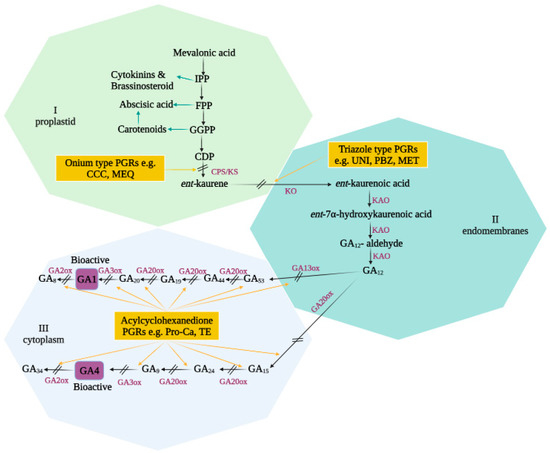Crop Breeding for Stress Tolerance
A topical collection in Agronomy (ISSN 2073-4395). This collection belongs to the section "Crop Breeding and Genetics".
Viewed by 50601Editor
Interests: plant abiotic and biotic stress tolerance; grain quality; genetics and breeding; agronomic traits
Special Issues, Collections and Topics in MDPI journals
Topical Collection Information
Dear Colleagues,
It is our great pleasure to inform you that a Special Issue focused on “Crop Breeding for Stress Tolerance” will be published in Agronomy. This Special Issue aims to highlight a range of reviews, opinions, and research articles on:
- Breeding for crop disease resistance;
- Breeding for crop abiotic stress tolerance (drought, waterlogging, acid soil, salinity, sodicity, frost, heavy metal toxicity, lodging, etc.);
- Fast-tracking development of improved wheat varieties with stress tolerance;
- Molecular and physiological mechanisms for crop biotic and abiotic stress tolerances;
- Development of phenotyping methodology.
Considering your expertise in the field, we would like to invite you to submit related papers to us. As an open access journal, we not only publish papers but also make them available worldwide to increase their downloads and citations.
Prof. Dr. Meixue Zhou
Guest Editor
Manuscript Submission Information
Manuscripts should be submitted online at www.mdpi.com by registering and logging in to this website. Once you are registered, click here to go to the submission form. Manuscripts can be submitted until the deadline. All submissions that pass pre-check are peer-reviewed. Accepted papers will be published continuously in the journal (as soon as accepted) and will be listed together on the collection website. Research articles, review articles as well as short communications are invited. For planned papers, a title and short abstract (about 100 words) can be sent to the Editorial Office for announcement on this website.
Submitted manuscripts should not have been published previously, nor be under consideration for publication elsewhere (except conference proceedings papers). All manuscripts are thoroughly refereed through a single-blind peer-review process. A guide for authors and other relevant information for submission of manuscripts is available on the Instructions for Authors page. Agronomy is an international peer-reviewed open access monthly journal published by MDPI.
Please visit the Instructions for Authors page before submitting a manuscript. The Article Processing Charge (APC) for publication in this open access journal is 2600 CHF (Swiss Francs). Submitted papers should be well formatted and use good English. Authors may use MDPI's English editing service prior to publication or during author revisions.
Keywords
- crop
- abiotic stress
- biotic stress
- molecular mechanisms
- stress physiology
- breeding methodology
- phenotyping
Planned Papers
The below list represents only planned manuscripts. Some of these manuscripts have not been received by the Editorial Office yet. Papers submitted to MDPI journals are subject to peer-review.
Title: Tentative review title: Genetic improvement of heat stress tolerance in cereal crops
Authors: Camilla Hill
Affiliation: Murdoch University
Abstract: Heat damage is a very common and limiting crop production constraint globally. Cereal flowering stages are very sensitive to high temperatures which can significantly decrease fertility and seed-setting rate, directly resulting in severe grain yield losses. In addition to yield loss, heat stress dramatically reduces grain quality and weight, seed germination and seedling growth. At the molecular level, heat stress leads to oxidative stress through excess production of reactive oxygen species, reduction of photosynthesis, and inhibition of starch biosynthesis. Under the current climate pattern, it is expected that high temperatures and heat shock will occur more frequently and much earlier in the future. Genetic variability for heat stress tolerance can be used in breeding programs to develop tolerant genotypes. The availability of genome assemblies with high-confidence sequences for many cereal crops including rice, maize, bread wheat and barley, now allow the identification of heat stress tolerance-associated genes and gene networks. In this review, we will report current knowledge on the detrimental effects of heat stress on cereal crop production at the physiological and molecular levels. We will further provide a summary of available genomic resources, genetic variation, candidate genes, and molecular markers for heat stress tolerance, and will discuss effective approaches for heat stress management, including germplasm screening in the glasshouse and in field trials, marker-assisted selection, mapping genomic loci and identification of candidate genes, and genomic-assisted breeding that enhance heat tolerance in cereal crops including rice, wheat and barley.
Title: Waterlogging Stress Physiology in Barley
Authors: Ana Badea
Affiliation: Plant Research International, P.O. Box 619, 6700 AP Wageningen, the Netherlands
Abstract: Barley (Hordeum vulgare) is the most susceptible cereal species to excess moisture stress. Waterlogging-induced hypoxia causes major morphological, physiological and metabolic changes some of which are regulated by the action of plant growth regulators and signal molecules including nitric oxide (NO). Recent studies have evidenced the participation of Phytoglobins in attenuating hypoxic stress during condition of excessive moisture through their ability to scavenge NO and influence the synthesis and response of growth regulators. This review will highlight major cellular changes linked to plant responses to waterlogging stress with emphasis on Phytoglobins.
Title: The Barley Phytoglobin 1 ameliorates plant performance to waterlogging
Authors: Ana Badea
Affiliation: Plant Research International, P.O. Box 619, 6700 AP Wageningen, the Netherlands
Abstract: Phytoglobins are ubiquitous proteins participating in a variety of stress responses, including excess moisture. Over-expression of the barley (Hordeum vulgare) Phytoglobin 1 HvPgb1 enhanced tolerance to waterlogging. Relative to waterlogged wild type (WT) plants, plants over-expressing HvPgb1 exhibited enhanced growth and retention of gas exchange parameters. These effects were associated to major changes in global gene expression, as well as alterations of several morpho-physiological parameters linked to tolerance to excess moisture. Relative to their susceptible counterparts, tolerant barley cultivars exhibited a higher expression of HvPgb1 after 20h of waterlogging, suggesting that the expression of this gene could be used as a potential tool to select for plant tolerance to excess moisture.
Title: Genome-wide association analysis of aluminium tolerance in chickpea
Authors: Yong Jia
Affiliation: Murdoch University · Western Australian State Agricultural Biotechnology Centre (SABC)
Abstract: Domesticated chickpea (Cicer arietinum L.) is one of the most important legumes with great food and nutritional values. Like many other crops, the production of chickpea can be severely limited by aluminium (Al) toxicity under acidic soils, which are prevalent in many countries. To investigate the genetic mechanism of Al resistance in chickpea, we used a collection of 212 chickpea genotypes (45 Cicer arietinum, 127 Cicer reticulatum, and 40 Cicer echinospermum) and grow them in hydroponics for 4 days with different Al concentrations. The Al tolerance was assessed by calculating the relative root growth under two Al treatments (15 µM & 30 µM Al) compared to the control (0 µM Al). Significant variations in Al tolerance was observed across the target chickpea genotypes, indicating an effective pool for genetic association analyses. Single nucleotide polymorphism (SNP) data of 190 target chickpea lines was obtained from a previous chickpea genome sequencing study. After adjusting for the subpopulation factor, genome-wide association analysis identified a QTL on chromosomes 7 which was consistently detected under both 15 µM and 30 µM Al treatments. The potential candidate gene underlying this QTL is selected and discussed. In summary, this study contributes to our understanding of the genetic mechanism of Al tolerance in chickpea. The SNP markers identified in this study may be used for future breeding program to improve Al tolerance in chickpea.
Title: Review on heavy metal
Authors: Fangbin Cao
Affiliation: Zhejiang University
Title: Recent progress in Fusarium crown rot resistance in wheat and barley
Authors: Chunji Liu
Affiliation: The Commonwealth Scientific and Industrial Research Organisation | CSIRO · Division of Plant Industry
Abstract: Fusarium crown rot (FCR), caused by various Fusarium pathogens, is a chronic disease to wheat and barley production worldwide. This disease has become more prevalent in recently years likely due to the wide adoption of minimum tillage and stubble retention. Several loci conferring FCR resistance have been reported in both species but plant height is likely responsible for the locus on 4BS in wheat and the one on 3HL in barley. Near isogenic lines (NILs) have been generated for some of these loci and evaluating effects of a given locus using NILs overcomes issues related to interaction between FCR resistance and other traits of agronomic importance. Facilitated by transcriptome analysis, markers tightly linked to a few loci have been obtained by analysing NIL-derived populations. These markers and populations form solid foundation for cloning genes underlying each of these resistance loci. Gene pyramiding has been shown to be effective in enhancing resistance to this disease in both wheat and barley. Different from Fhb1 which confers resistance to Fusarium head blight but not to FCR, Fhb7 seems to provide resistance to both Fusarium diseases. Effects of Fhb7 against different Fusarium pathogens in different environments need to be assessed and interactions between it and other resistance loci need to be evaluated.
Title: Cross-tolerances between biotic and abiotic stresses in crops
Authors: Chunji Liu
Affiliation: The Commonwealth Scientific and Industrial Research Organisation | CSIRO · Division of Plant Industry
Abstract: Crop production is constantly threatened by biotic and abiotic stresses. Enhancing crop resistance and tolerance to either of these threats genetically must be a target in all major breeding programs worldwide, and many genes conferring resistance or tolerance to a wide array of stresses have been identified. Available results indicate that some genes can confer resistance or tolerance to several different biotic and abiotic stresses and exploiting such genes would increase breeding efficiency by reducing the number of targeted loci. However, several factors must be considered when selecting such genes for use: a) the values of a gene cannot be adequately determined by the level of its expression alone; b) mapping based on segregation populations does not only suffer from limited resolution but also from the interferences of non-targeted traits; and c) deleterious effect of a gene on yield and quality. Selected studies are used to discuss these factors and possible solutions are discussed in this review.
Title: Understanding the evolution of plant disease resistance genes for crop improvement
Authors: Ting Xiang Neik; Jacqueline Batley; Tingting Wu; Fangning Zhang
Affiliation: The University of Western Australia, Perth 6009, Australia
Abstract: Brassica crop diseases caused by various pathogens, including virus, bacteria, fungi and oomycetes, have devastating effects on the plants, leading to significant yield loss. Worsened by the impact of climate change and the pressure to increase cultivation worldwide to feed the burgeoning population, managing Brassica diseases has become a challenge demanding a rapid solution. In this review, we make a detailed introduction of the plant immune system, discuss the evolutionary pattern of both dominant and recessive disease resistance (R) genes in Brassicas, and discuss the role of epigenetics in R gene evolution. Reviewing the current findings of how R genes evolve in Brassica provides further insight and develop creative ideas for crop improvement in relation to breeding sustainable, high quality, disease-resistant Brassica crops.









